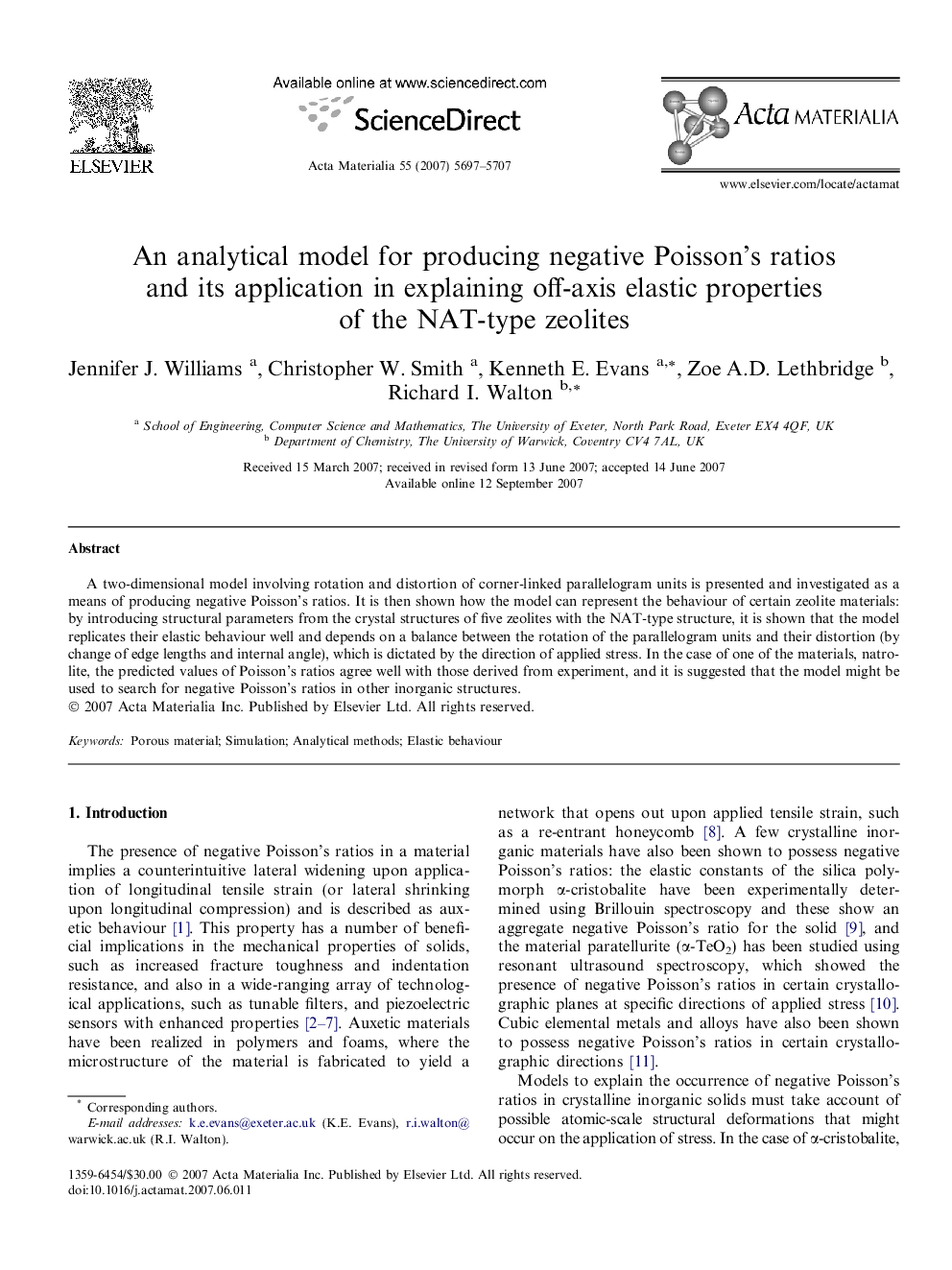| Article ID | Journal | Published Year | Pages | File Type |
|---|---|---|---|---|
| 1449717 | Acta Materialia | 2007 | 11 Pages |
A two-dimensional model involving rotation and distortion of corner-linked parallelogram units is presented and investigated as a means of producing negative Poisson’s ratios. It is then shown how the model can represent the behaviour of certain zeolite materials: by introducing structural parameters from the crystal structures of five zeolites with the NAT-type structure, it is shown that the model replicates their elastic behaviour well and depends on a balance between the rotation of the parallelogram units and their distortion (by change of edge lengths and internal angle), which is dictated by the direction of applied stress. In the case of one of the materials, natrolite, the predicted values of Poisson’s ratios agree well with those derived from experiment, and it is suggested that the model might be used to search for negative Poisson’s ratios in other inorganic structures.
